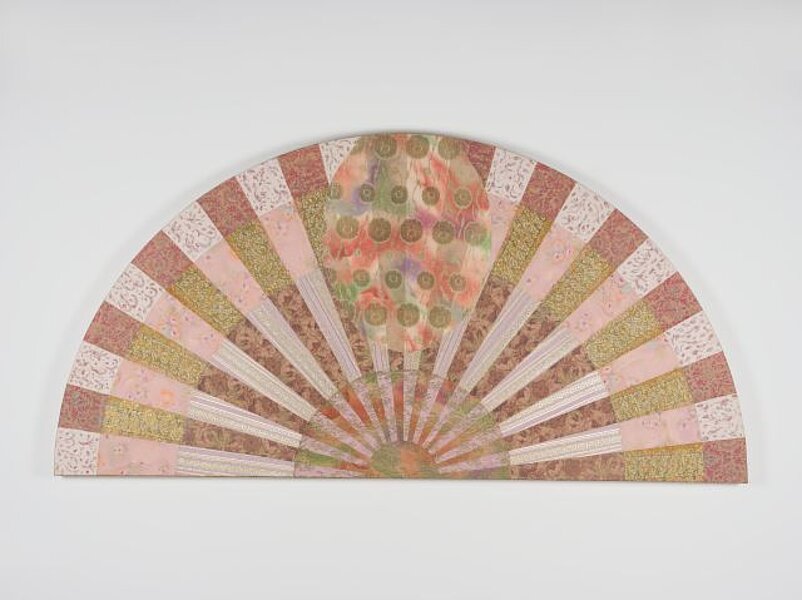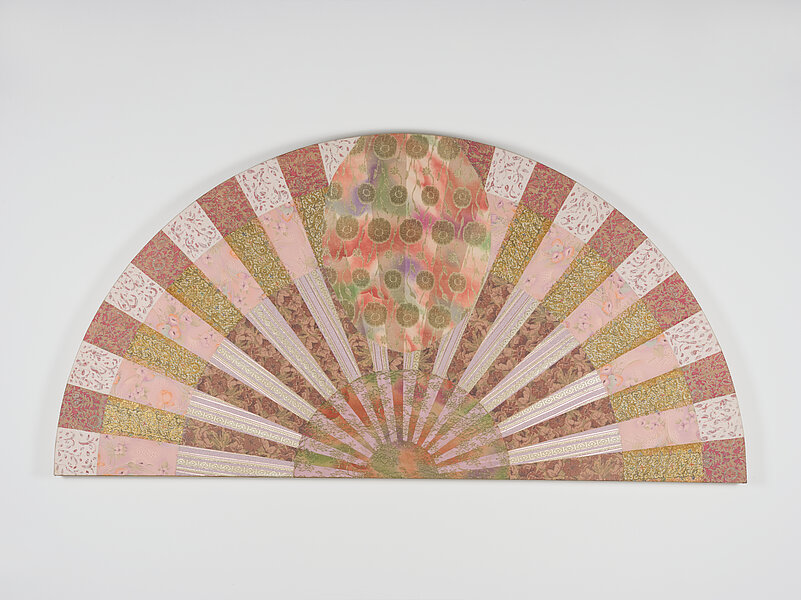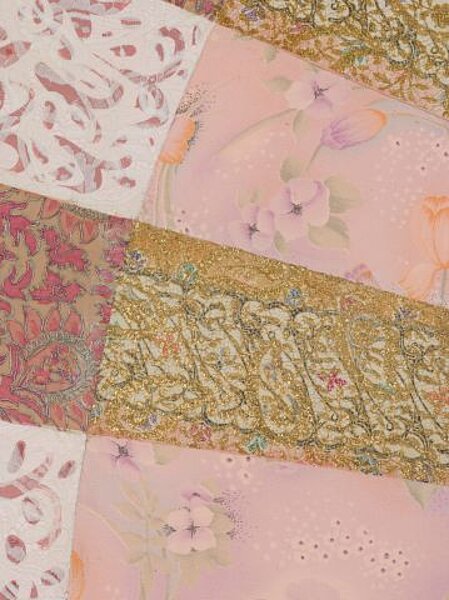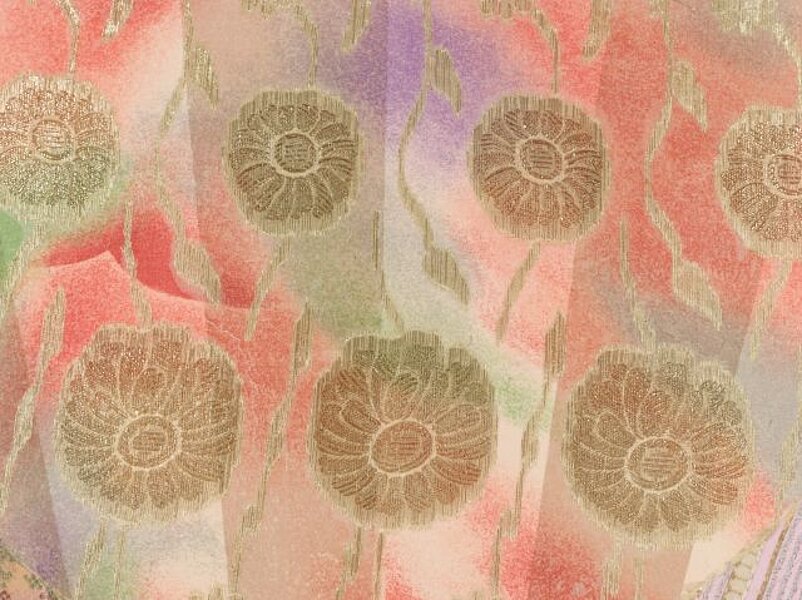
Schapiro, Miriam
Pink Light Fan
1979
| Object description | Acrylic on canvas, textile applications, collage |
|---|---|
| Object category | image |
| Material |
Object:
acrylic paint,
textile
Support:
canvas
|
| Technique | |
| Dimensions |
Object:
height: 123,5 cm,
width: 246 cm,
depth: 8,8 cm
|
| Year of acquisition | 1991 |
| Inventory number | ÖL-Stg 269/0 |
| Creditline | mumok - Museum moderner Kunst Stiftung Ludwig Wien, Leihgabe der Österreichischen Ludwig-Stiftung |
| Rights reference | Bildrecht, Wien |
| Further information about the person | Schapiro, Miriam [GND] |
In the late 1960s, artist Miriam Schapiro took up a position as a lecturer at the University of California in San Diego. It was there she got to know artist and writer Judy Chicago with whom she founded “Feminist Art Program” at the California Institute of Arts in 1971. Her work made her one of the leading figures in both the women’s movement and the ‘pattern and decoration movement’ in the art world. In her work Shapiro concentrated on neglected art forms and created aprons, doll houses and, from the late 1970s on, oversized fans. Until well into the 20th century the fan was regarded as one of a lady’s essential accessories. Elaborately painted, they became image carriers and some of them were precious status symbols. The fan is gracious instrument for presenting and representing a woman, its fine subtle delicacy and sensibility conveys sensitive femininity and it is famous for being the communicative instrument of courtly love during the rococo period. In the case of “Pink Light Fan” from 1979, we are dealing with a canvas in the form of an oversized fan. For the symmetrically structured picture of the fan the artist chose alternating, finely-patterned fabric in light and dark pink tones that were affixed to the canvas. At the highest point, in the centre, there is a florally-patterned fabric in the form of an egg which in many countries is regarded as a symbol of fertility. From the 1970s on, most of Schapiro’s oeuvre consists of fabric collages for which she coined the term ‘femmages’, a derivative of ‘feminist-oriented collage’. She described the term ‘femmage’ in an article and laid down a number of guidelines as to when a work falls into the category. The first and most important criterion is that the work must come from a woman. Fabrics are a further essential element of the work. In addition, the subject should have to do with women’s lives and contain an element of hidden metaphor. Equally, according to Shapiro, there should be both a functional and aesthetic side to the work
© mumok – museum moderner kunst stiftung ludwig wien



